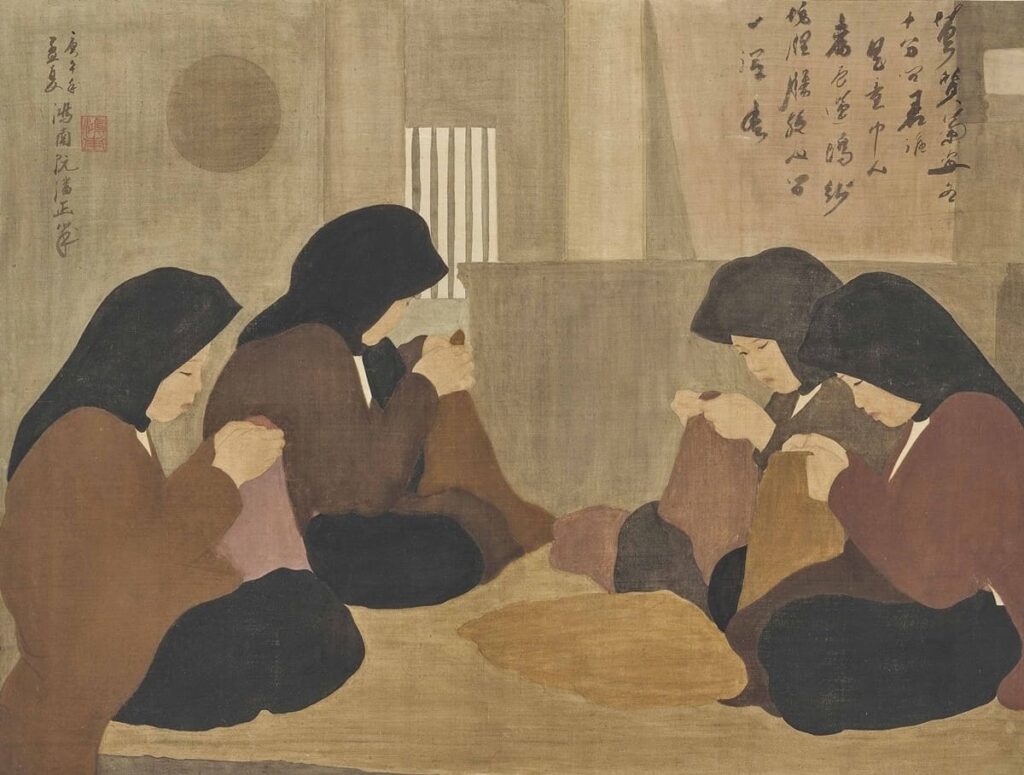Introduction to Vietnamese Silk Paintings
Vietnamese silk paintings are a unique artistic heritage, deeply imbued with the cultural finesse and spirit of Vietnam. With a history spanning centuries, these artworks are not just paintings but stories of creativity and talent crafted by Vietnamese artists. From ancient silk paintings to modern masterpieces by Nguyễn Phan Chánh, Vietnamese silk paintings have captured the hearts of art lovers worldwide. In this article, we’ll explore the origins, techniques, materials, and cultural value of Vietnamese silk paintings, along with notable works that have defined this art form.
Discover more about this art form at the Vietnam art gallery.
Origins of Vietnamese Silk Paintings
Where Did Vietnamese Silk Paintings Originate?
The origins of Vietnamese silk paintings are tied to the traditional craft of mulberry cultivation and silkworm rearing, a longstanding practice in Vietnam. Silk paintings emerged centuries ago, initially without standardized techniques, passed down through generations. According to the Vietnam History Museum, ancient silk paintings from the 15th-16th centuries, such as portraits of Nguyễn Trãi and Phùng Khắc Hoan, demonstrate the early development of this art form.
A significant leap occurred in the 1930s with the establishment of the École des Beaux-Arts de l’Indochine (1925) in Hanoi, founded by French artist Victor Tardieu. Students like Nguyễn Phan Chánh and Nguyễn Nam Phương blended Western painting techniques with Eastern aesthetics, creating a distinctive silk painting style. In 1931, Vietnamese silk paintings were introduced to Europe, marking a milestone in bringing Vietnamese art to the global stage.
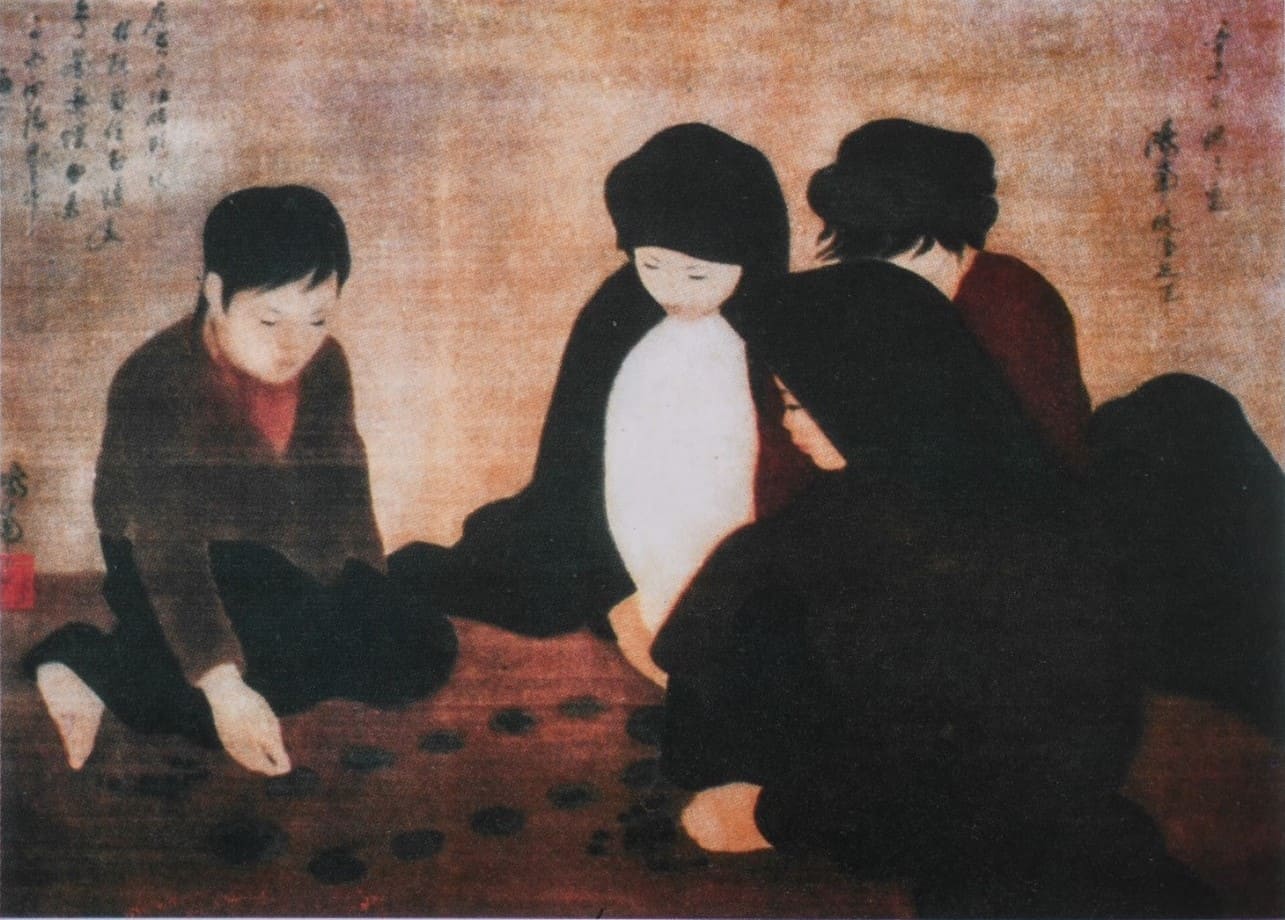
Who Shaped Vietnamese Silk Paintings?
- Nguyễn Phan Chánh: Considered the “father” of modern Vietnamese silk painting, known for works like Playing O An Quan and Washing Vegetables by the Bridge.
- Tô Ngọc Vân: Combined silk painting with post-Impressionist styles, creating soft and refined artworks.
- Trần Văn Cẩn: Brought folk-inspired themes to silk paintings, reflecting everyday Vietnamese life.
Materials for Vietnamese Silk Paintings
What Materials Are Used in Vietnamese Silk Paintings?
The materials used in Vietnamese silk paintings are key to their unique beauty. The primary materials include:
- Silk Fabric: Natural silk, thin and lightweight, woven from silkworm threads, offering a glossy and soft texture. Silk from villages like Vạn Phúc (Hanoi) is renowned for its durability and quality.
- Watercolors: Traditionally extracted from natural sources like bamboo charcoal (black), indigo (blue), or shell powder (white). Today, industrial watercolors are used for brighter hues.
- Pigments and Pastels: Some modern artists use pigments or pastels to create opaque effects, adding depth to the artwork.
- Wooden Frame: A lightweight frame to stretch the silk, less sturdy than those used for oil paintings.
How to Choose the Right Materials?
- Quality Silk: Natural silk from reputable villages like Vạn Phúc offers better texture and color absorption than industrial silk.
- Color Testing: Use durable watercolors that resist fading under light. Test colors on a small silk piece before painting.
- Style Customization: Thin silk suits translucent paintings, while thicker silk is ideal for bold color layers.
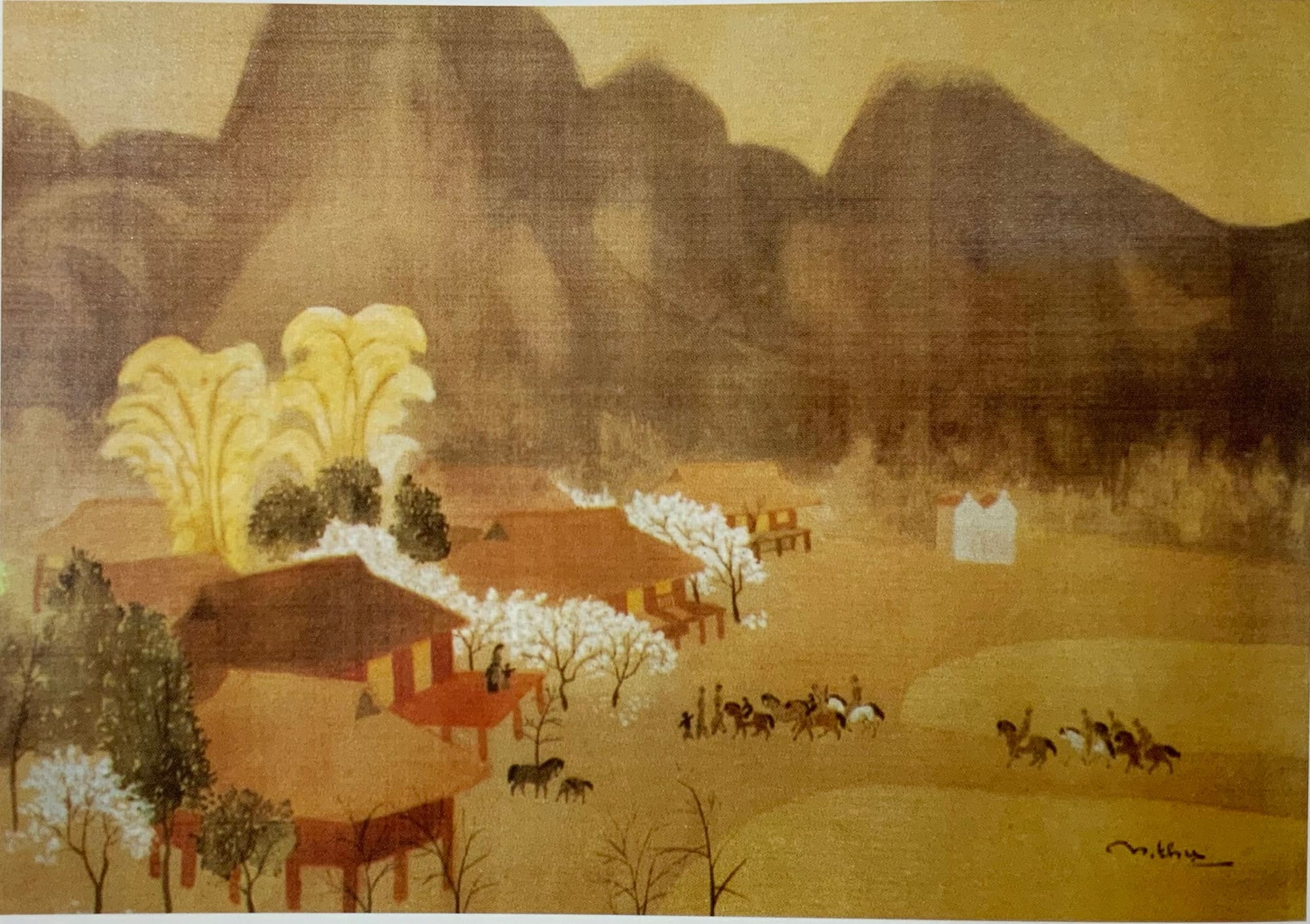
Techniques for Painting Vietnamese Silk
What Makes Silk Painting Techniques Unique?
Silk painting techniques combine the artist’s skill with the delicate nature of silk. The key differences between ancient and modern silk paintings are:
- Ancient Silk Paintings: Painted directly on dry silk with minimal color layers, creating a rustic feel.
- Modern Silk Paintings: Use multi-layered dyeing techniques to create light effects and depth.
Basic steps in silk painting techniques:
- Prepare the Silk: Stretch silk on a lightweight wooden frame, ensuring a flat but not overly taut surface.
- Sketching: Use a pencil or white chalk to outline the composition.
- Start with Light Colors: Begin with light tones, then add darker shades for contrast.
- Layered Dyeing: Gently apply multiple watercolor layers, allowing each to dry fully before adding the next.
- Finishing: Apply a protective layer (if needed) or leave the silk untouched to preserve its delicate nature.
How to Paint Beautiful Silk Artworks?
- Control Moisture: Silk absorbs water quickly, so use soft brushes and manage water carefully.
- Test First: Practice on a small silk piece to understand color absorption.
- Use Lighting: Check color effects under natural or artificial light to enhance the painting’s vibrancy.
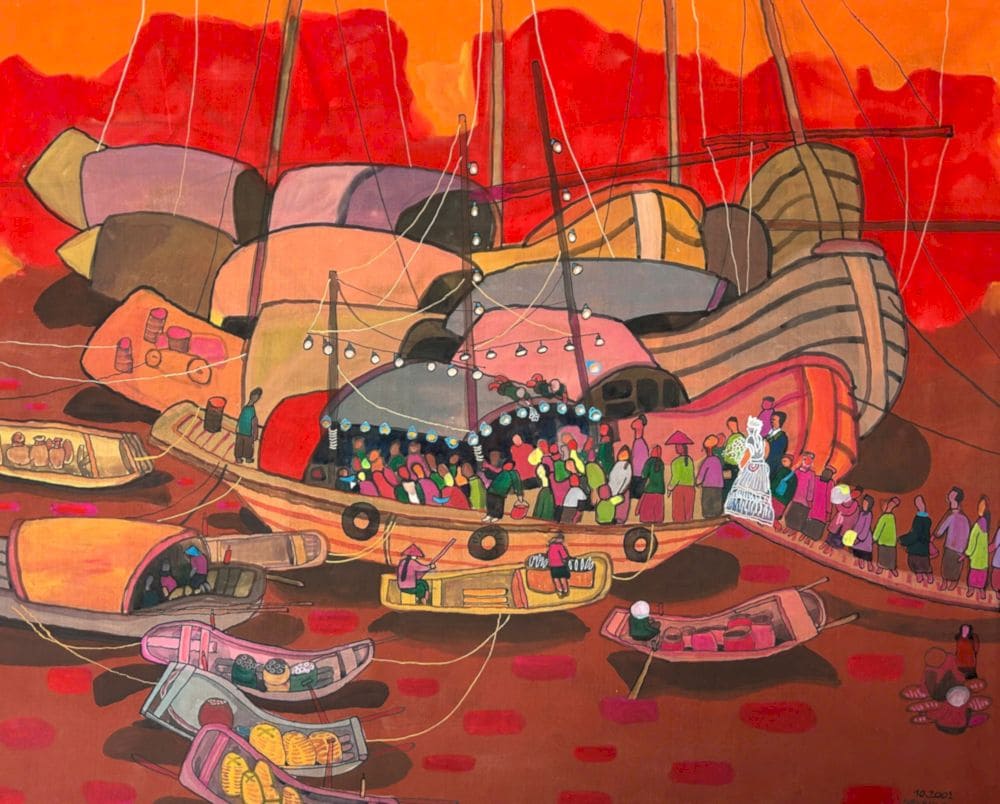
Cultural Value of Famous Vietnamese Silk Paintings
Why Are Vietnamese Silk Paintings Culturally Significant?
The cultural value of Vietnamese silk paintings lies in their blend of artistry and national identity. These artworks often depict:
- Daily Life: Such as Playing O An Quan by Nguyễn Phan Chánh, capturing traditional games with delicate brushwork.
- Natural Landscapes: Portraying Vietnam’s rural scenes, rivers, and serene beauty with the softness of silk.
- Portraits and History: Reflecting people and historical contexts, like 15th-century portraits.
According to Thanh Niên, Vietnamese silk paintings have been showcased at international exhibitions since 2006, standing alongside Chinese and Japanese silk art. They serve as a cultural bridge, helping the world understand Vietnam’s heritage.
Which Vietnamese Silk Paintings Are Famous?
Notable Vietnamese silk paintings include:
- Playing O An Quan (Nguyễn Phan Chánh): Depicts four girls playing a traditional game, embodying Vietnam’s rural soul.
- Washing Vegetables by the Bridge (Nguyễn Phan Chánh): Captures a village girl’s simplicity with emotional depth.
- Girl by the Lily (Tô Ngọc Vân): Blends Western techniques with Eastern grace.
- Girl by the River (Trần Văn Cẩn): Showcases the tranquil beauty of rural Vietnam.
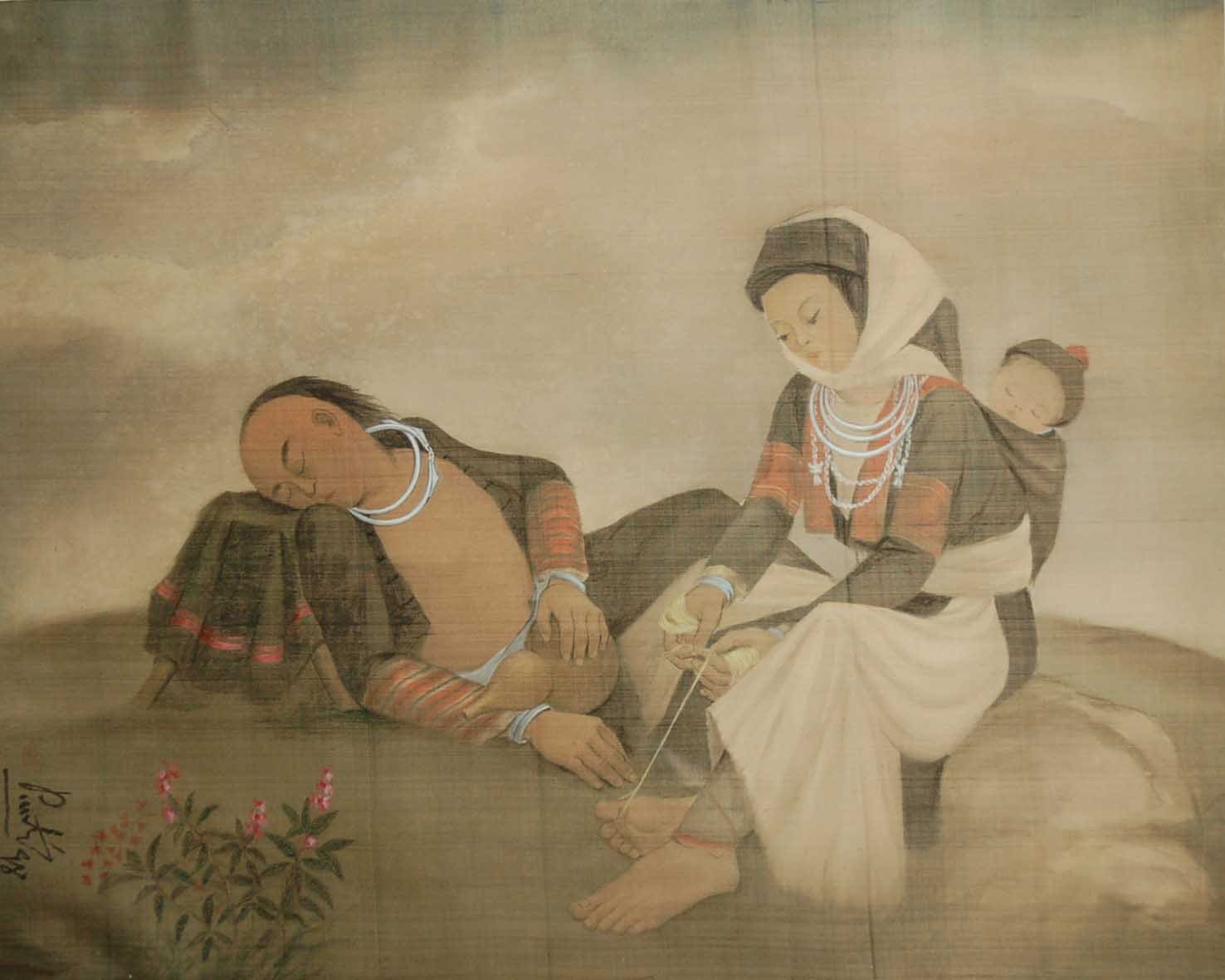
How to Appreciate Silk Paintings?
- View from Different Distances: Silk paintings appear ethereal from afar and detailed up close.
- Visit Exhibitions: Explore the Vietnam Fine Arts Museum or international galleries.
- Learn the Context: Research the artist and story behind each painting for deeper understanding.
Practicing Simple Silk Painting at Home
How to Start Painting on Silk?
Beginners can try silk painting at home with these simple steps:
- Gather Materials: Purchase natural silk (30x40cm), watercolors, and a small wooden frame from art stores.
- Learn from Videos: Watch YouTube tutorials to master silk stretching and color blending.
- Start with Simple Designs: Begin with themes like flowers or rural landscapes.
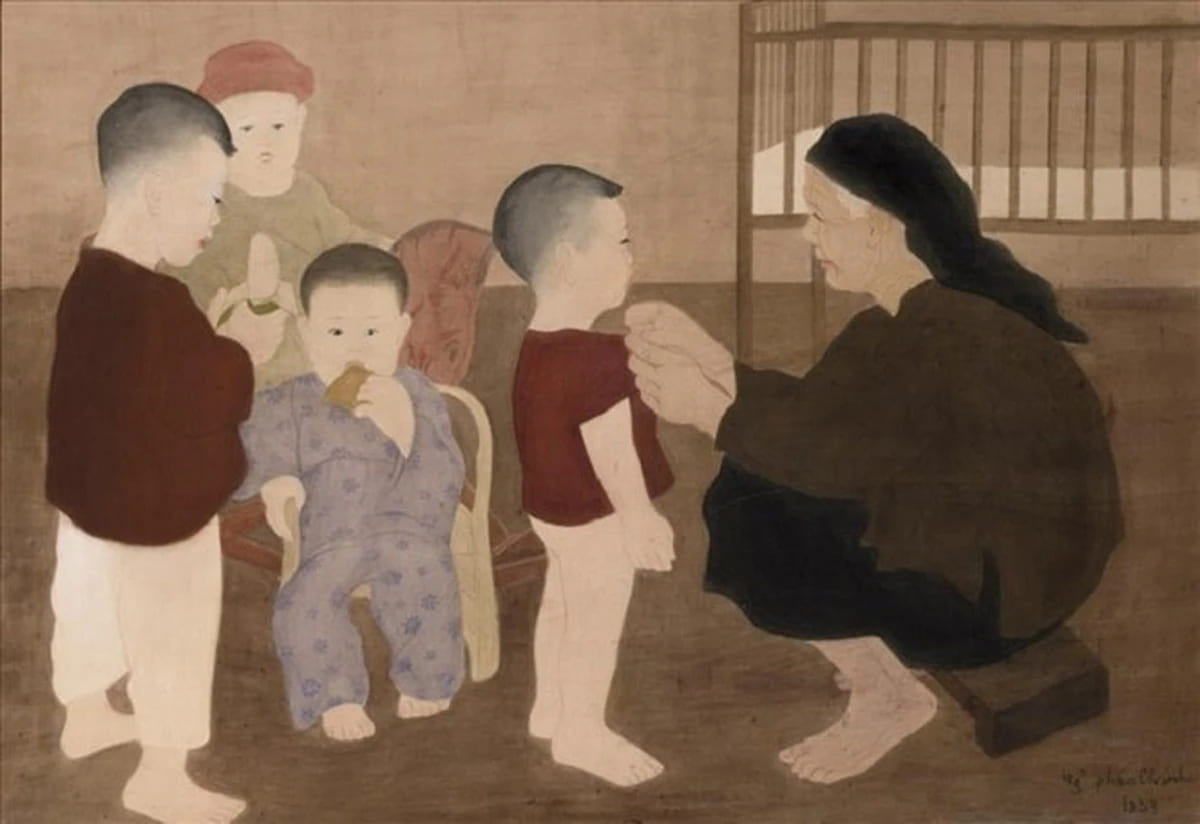
Tips for Successful Silk Painting
- Use Soft Brushes: Natural bristle brushes ensure even color application.
- Control Water: Too much water can wrinkle silk or cause colors to bleed.
- Test on Small Silk: Practice on a small piece to understand how silk absorbs color.
Preserving and Promoting Vietnamese Silk Paintings
How to Preserve Vietnamese Silk Paintings?
- Proper Storage: Keep silk paintings in a dry place, away from direct sunlight to protect colors.
- Learn and Practice: Join workshops at the Vietnam Fine Arts Museum or Vạn Phúc village.
- Promote via Media: Share silk painting images on platforms like Instagram or Zalo to spread their value.
The Role of Silk Paintings in Modern Art
Vietnamese silk paintings remain vital in contemporary art, blending tradition with modernity. Young artists like Nguyễn Thanh Bình continue to innovate, creating works that resonate with modern tastes while preserving the traditional elegance of silk.
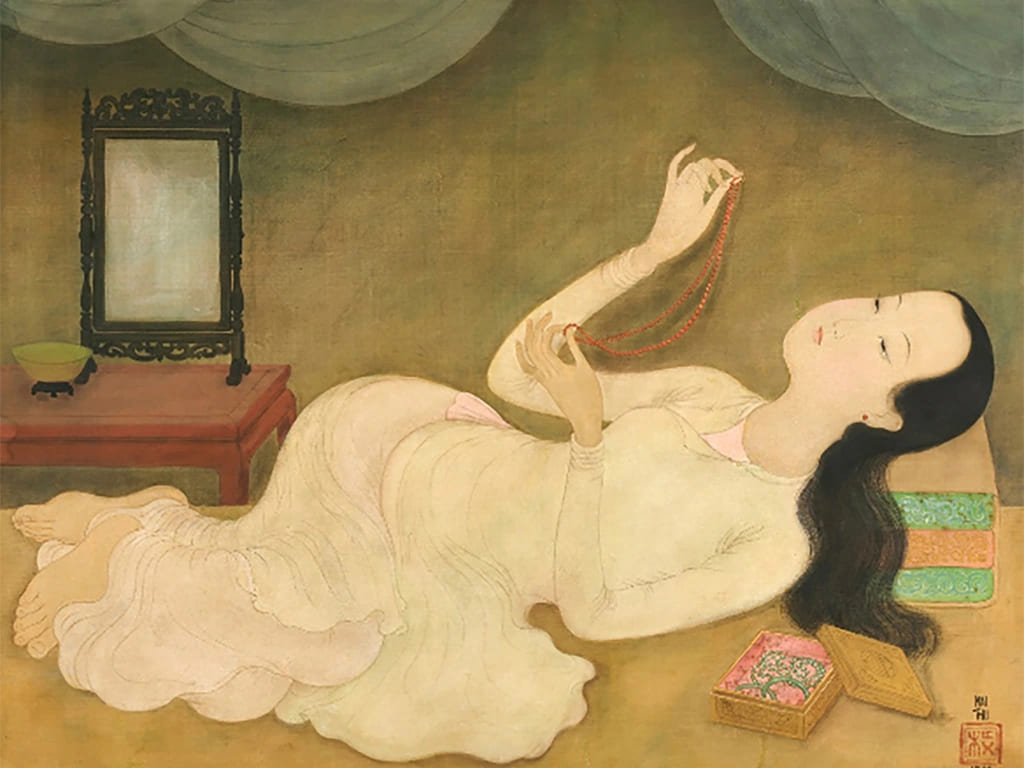
Vietnamese silk paintings are more than an art form—they are a cultural heritage reflecting the ingenuity and soul of Vietnam. From their origins and painting techniques to their cultural value, each silk painting tells a story of history, culture, and creativity. Start your journey by visiting exhibitions, trying a small silk painting, or sharing this article to spread the beauty of Vietnamese silk art!
Next Steps
- Visit the Vietnam Fine Arts Museum to admire famous Vietnamese silk paintings.
- Purchase silk and watercolors to try painting at home.
- Share this article to introduce friends to the heritage of silk paintings!

